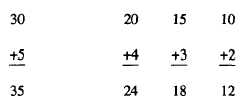| |
detailed description of each item and stock numbers of
substitute items. It also includes illustrations and
diagrams of many types of material. The ASG is printed
in six different sections. You still must use the ML-N to
check for unit price, current NSN, and unit of issue.
Consolidated Master Cross-Reference List
The Consolidated Master Cross-Reference List
(C-MCRL) is a consolidated list of all NSN items of
supply in the FSC system. Consequently, it includes
many NSNs that are not listed in the ML-N. The
C-MCRL is distributed annually to Navy users. The
C-MCRL is made up of two parts. Part I crosses both
reference numbers and CAGE numbers to NSNs. Part
II crosses NSNs to both reference numbers and CAGE
numbers.
DETERMINING STOCK LEVELS
The determination of stock levels for individual
items depends on whether the item is SIM or non-SIM.
This section focuses on the manual SIM computation.
SIM ITEM COMPUTATION OF
DEMAND-QUARTERLY
The demand quantities entered in the Issues column
of each SIM stock record during the past 6-month,
9-month, or 12-month period are totaled. Based upon
the total quantity determined for the demand period, the
high limit, low limit, and safety level (HL/LL/SL)
quantities in each SIM stock record will be adjusted, as
necessary, to reflect the quantities authorized in the
appropriate average endurance table as illustrated in
figure 8-6. Computation of the total demand quantity
will be more frequent, if necessary, to reduce the
possibility of stock shortages or excesses. Periods of
unusual demand will be excluded from the demand
period. Quantities issued during an unusual demand
period will be excluded from the computation of the
total demand quantity. In determining the total demand
quantity, inventory and survey losses of missing
material will be included; inventory and survey losses
of on-hand material unfit for either issues or transfers
will not be included. When computing the total demand
quantity in stock records that reflect a unit of issue
change such as PR to EA or EA to DZ, any issue
quantities posted before the change must be converted
(in the count, not on the stock record) to quantities that
correspond with the current unit of issue. The demand
period used, the total demand quantity determined, and
the revised HL/LL/SL quantities should be made in
pencil because of the frequent changes normally
required.
Assuming a prescribed average endurance level of
75 days and an order and shipping time (O&ST) of 30
days, the revised data entries in figure 8-6 should be used
as follows:
If the total quantity issued from 18 April to 17
October 1993 (6 months) equals 20; then, for a 75-day
average endurance and a 6-month demand period, figure
8-6 indicates 14 as the high limit, 10 as the low limit,
and 7 as the safety level. When the quarterly
computation of demand results in a total demand
quantity that is not listed in the average endurance table,
the appropriate HL/LL/SL quantities can be determined
by:
l selecting two (or three, if necessary) of the listed
demand quantities that, when combined, equal the total
demand quantity determined from the stock record; and
then
l adding the HL/LL/SL quantities for each demand
quantity selected.
For example, assuming a prescribed average endurance
of 75 days, an authorized O&ST of 30 days, and a
6-month demand period, the HL/LL/SL quantities
authorized for a total demand quantity of 35 can be
determined from the table as follows:
Listed
demand
quantities
HL LL
SL
When the average endurance tables for 9-month and
12-month demand periods are used for determining the
HL/LL/SL quantities authorized, a quantity of one for
each additional 3-month period must be added to each
of the totals derived by the method described in the
above computation. Per OPNAVINST 4441.12, the
range and depth of allowance material may be changed
at the shipboard level under stockage criteria prescribed
by approved shipboard procedures. Such procedures are
authorized by fleet commanders in chief for use of
variable operating and safety levels and for intensive
inventory management of special items.
8-13
|

